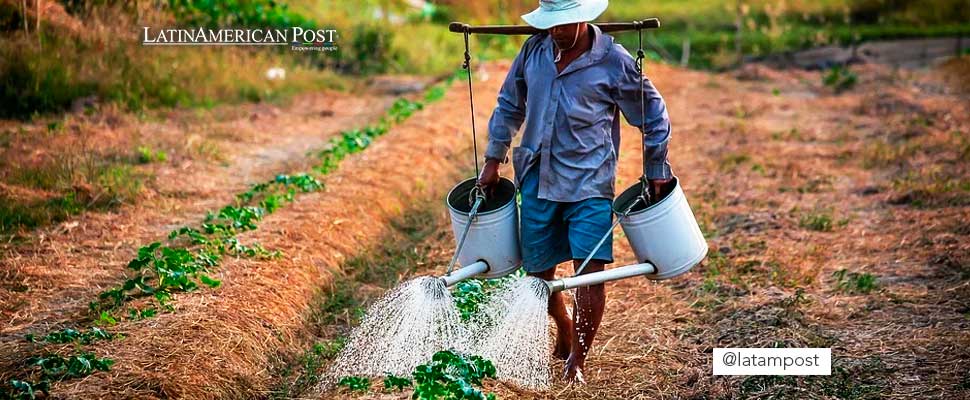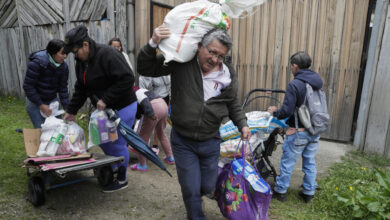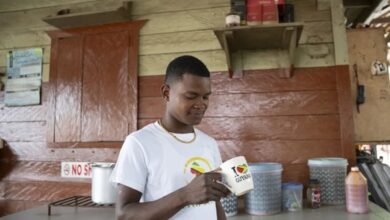Agroecology: the Future Of Your Diet
Why Is Agroecology the Solution To Environmental Problems?.

The world has been changing for decades and it is inevitable that in the not too distant future we will have more needs than we already have today. Photo: Pixabay
LatinAmerican Post | Brandon Martínez Salazar
Listen to this article
Leer en español: Agroecología: el futuro de tu alimentación
The world has been changing for decades and it is inevitable that in the not too distant future we will have more needs than we already have today. Global warming, the contamination of water sources, the indiscriminate felling of trees, among other things, are a reflection of the intervention of man in nature, whose purpose is to possess resources at a very high cost for the rest of humanity.
These activities that human beings have been developing to survive in a market society have had serious effects on all ecosystems, deteriorating every day our only place in space and leading us to important questions. Can we solve these problems in a more sustainable way and mitigate the environmental impact?
One of the sectors that is being the object of this activity that directly affects our environment is the traditional agribusiness whose purpose is the production and marketing of all kinds of agricultural and forestry products. However, this practice involves a process of transformation of raw materials that end up polluting the atmosphere and aquatic sources, the elimination of solid waste, and changes in the use of the land.
Also read: 5 Ecological Alternatives To Take Care Of Our Pets
What will happen in 2030 when there will be 2 billion more inhabitants? The logical thing is that more food should be produced, but the issue is how to supply the entire population without impacting the environment and how to make the distribution of these resources in the world more equitable, end famines, conflicts, and inequalities. The issue ultimately becomes a bit complex because we are facing a powerful industry but also in places like Europe approximately 222 million tons of food are wasted per year, while in some poor countries there is no food supply.
What is agroecology?
The term agroecology emerged in the 70s and it is itself a scientific discipline based on the application of the concepts and principles of ecology, the design, development, and management of sustainable agricultural systems. According to the Food and Agriculture Organization of the United Nations (FAO), all this brings together a mixture of science, sustainability practices, and a social movement that seeks to change agribusiness for activities that produce healthier food, paying attention to the conservation of natural resources and biodiversity.
La #Agroecología es una manera de conectar conocimientos tradicionales y científicos con el fin de producir alimentos de una manera más sostenible
Conoce sus 5⃣ beneficios principales: pic.twitter.com/Rhi2c2iZwa
— FAO Perú (@FAOPERU) July 14, 2021
This concept counterbalances what we have been living for decades with an industry that has been ruthlessly dangerous to ecosystems. Agroecology is shown as an option in the future not only to generate sustainability, but so that each person can apply it in their own environment, following key principles such as diversity, joint creation and exchange of knowledge, synergy, efficiency, recycling, resilience, human and social values, culture and food traditions, responsible governance and a circular and solidarity economy.
How to apply agroecology individually?
Anyone can put agroecology into practice, it is enough to have a small garden, a patio or even a balcony to produce their own food. According to the United Nations Agenda for Sustainable Development 2030, one of its main objectives is to find forms of responsible production and consumption. For this, it proposes the following: “the efficient use of resources and energy, the construction of infrastructures that do not harm the environment, the improvement of access to basic services and the creation of ecological jobs, fairly remunerated and with good working conditions. ”.
However, the first step is to have an area or space where you can have at least a small crop that can be used for planting everything from vegetables to tubers. The ideal in this practice is to take advantage of the time to generate a degree of self-sufficiency and generate more green spaces necessary in large cities.
The second step is to learn as agroecology develops so that it becomes an individual and social lifestyle since the final aim is that it be a massive movement where the activities carried out can be shared. and, therefore, that the whole world will understand this as an elementary need in the human being.
The third step is to enjoy the objectives achieved and through experience propose new ways for the distribution of knowledge to make agroecology a human value for future generations and thus not depend on large industries.




